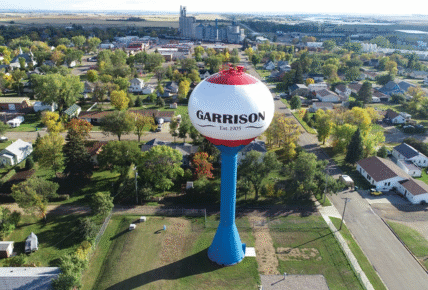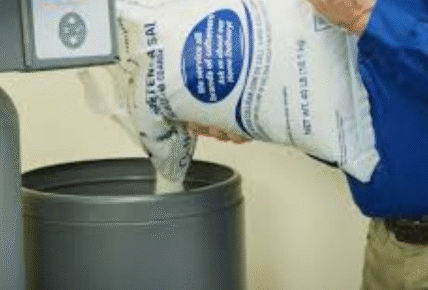It’s the kind of thing you don’t really expect—until you do. You’re thirsty, head to the kitchen, pour a glass of water from the tap, take a sip, and… bam. There it is. That unmistakable metallic aftertaste. Like chewing on a coin or licking the inside of an old pipe. Not exactly the refreshing drink you were hoping for.
So what gives? Is your plumbing haunted? Did something go wrong with your RO filter? Or is this just one of those “normal but annoying” things? Let’s untangle the mystery of metallic-tasting water—no alarmism, no nonsense. Just a real talk kind of breakdown.
That First Sip: Why Does My Water Taste Like Metal?
You’d be surprised how common this is. That odd tang in your mouth isn’t your imagination. If tap water tastes metallic, it’s usually due to trace metals in the water supply—like iron, copper, manganese, or zinc. These aren’t necessarily harmful in small amounts (some are even essential for health), but your taste buds are sensitive little sensors, and they don’t miss a thing.
The sources? Well, they vary. It could be from the municipal water supply, old corroding pipes, your household plumbing, or even your water heater. Sometimes, water that’s sat stagnant in the pipes for a bit will have a stronger taste—especially in the morning or after a vacation.
The good news? It’s usually fixable. But before we jump to solutions, let’s zoom out and understand what’s going on.
When the Tap Water Has a Tinny Attitude
Ever noticed that slightly blood-like or tangy flavor right as the water hits your tongue? That’s usually iron or copper making an appearance. If you’ve got older plumbing, that’s a big clue. Corroding copper pipes are notorious for this.
This is when you start Googling terms like “tap water metallic taste” and wondering if it’s safe. In most cases, yes—it is. These trace metals often exist within regulated levels, especially if you’re on city water. But if the flavor is strong or sudden, it’s smart to get it tested. Just to be safe.
And if your home relies on well water? Buckle up. High iron or manganese is even more likely, and you might notice reddish-brown stains on fixtures or laundry. Yikes.
Blame the Water Heater?
Here’s a fun twist—sometimes your water heater is the bad guy. When the anode rod inside it starts deteriorating, it can release metallic ions into the water. If you only notice the flavor in hot water, this could very well be the issue.
Simple test? Run the cold tap and taste. Then run the hot tap separately. If the metallic taste is isolated to the hot water, the heater’s the likely culprit.
When the Filtered Water Isn’t Much Better
Now, let’s talk about a head-scratcher: RO water tastes metallic too? That’s just not fair.
Reverse osmosis systems are supposed to remove everything, right? Well, yes and no. RO systems strip water of most dissolved solids—both good and bad. That includes minerals your body and taste buds might actually appreciate.
When the water is too “empty” (think ultra-purified), it can taste flat, bitter, or slightly metallic. Especially if the RO system hasn’t been maintained properly—filters overdue for replacement, the storage tank going stale, or a post-filter missing.
Also, some systems add minerals back in for taste, but depending on the mix, it might still leave a metallic edge that doesn’t sit right with some people. Everyone’s palate is different.
The Science Behind the Metallic Sip
Let’s get just a tad nerdy for a second. Your taste receptors can detect metal ions. Even tiny amounts. And they’re especially sensitive to iron and copper. The lower the pH of your water (meaning more acidic), the more likely these metals are to dissolve and show up in your glass.
If your water source has high acidity or low buffering capacity (common in some private wells), metals from pipes or fixtures can leach more easily. Boom. Metallic flavor.
What You Can Do About It
No need to suffer in silence (or switch to soda full-time). Here are a few down-to-earth fixes:
- Flush the Pipes – Run the tap for a minute before you pour. Especially if the water’s been sitting for a while.
- Get It Tested – A simple water test can tell you exactly what’s in your H2O. Handy whether you’re on city water or a private well.
- Replace Filters – If you’re using a filter or RO system, check if it’s due for a swap. An expired filter won’t just be ineffective—it might actually make things worse.
- Use a Remineralizer – If your filtered water is too “pure” and tastes metallic, adding back healthy minerals like calcium and magnesium can balance the flavor.
- Consider Plumbing Updates – In older homes, replacing outdated pipes might be a long-term win. Not cheap, but worth considering.
- Install a Whole-House Filter – If iron or manganese are the real villains, these systems can stop the problem at the source—before it ever hits your glass.
When to Worry
Not all metallic tastes are created equal. If the change is sudden and strong, or you notice other weird symptoms (smells, discoloration, or even stomach issues), don’t ignore it. Lead, for example, is tasteless and odorless—so if you suspect old pipes or fixtures, get professional testing.
And if anyone in your household has a suppressed immune system or specific health concerns, better to err on the side of caution. Safe water is non-negotiable.
The Real Taste of Clean
Water isn’t supposed to taste like a flavor explosion—it’s supposed to taste like… well, not much. But when your tap water tastes metallic, or your trusted RO system starts giving you vibes of a penny jar, something’s off.
The goal isn’t to panic—it’s to pay attention.
Water is your home’s most used resource. You bathe in it, cook with it, give it to your kids and pets. So if it starts tasting like it’s been brewed in a toolbox, don’t just shrug it off.
Chances are, there’s a simple fix. Whether it’s flushing the lines, tweaking your filter setup, or investing in some new tech, your taste buds—and your peace of mind—will thank you.
Final Sip
We often take our water for granted, right up until it does something weird. Metallic flavor might seem like a small thing, but it’s often your first clue that something in the system could use a little TLC.





